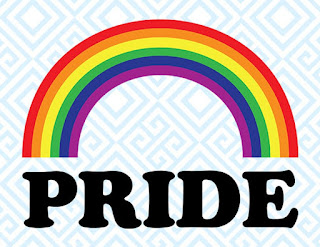Jamie Reid: God Save Jack the Ripper (1979)
One of a series of posters designed by Reid for The Great Rock 'n' Roll Swindle (1980)
For more information visit the Victoria and Albert Museum website: click here.
Some interesting emails have arrived in my inbox concerning a recent post by Símón Solomon on Charles Manson: click here.
Several people professed no interest in the case; others voiced their concern that, in publishing the post, I am helping to further mythologise Manson and his Family when such vile individuals should be starved of the oxygen of publicity and allowed to fade from the collective memory as soon as possible.
However, whilst I agree with D. H. Lawrence that "if you only palpitate to murder" it quickly becomes boring and results, ultimately, in "atrophy of the feelings" (i.e., like the sexual excitement generated by pornography, the sensational thrill of violent crime is subject to a law of diminishing returns and one must therefore seek out an ever more lurid level of explicit detail), I don't think we can simply ignore negative limit-experiences.
Like it or not, figures like Charles Manson are indelibly part of the cultural imagination and undoubtedly have something important - if disturbing - to tell us about ourselves. As Símón rightly argues, it's virtually impossible to exaggerate (or expunge) Manson's enduring impact and whilst some might need to think him beyond the pale, he was "very much a product of American post-War popular culture and a toxic body politic".
Like it or not, figures like Charles Manson are indelibly part of the cultural imagination and undoubtedly have something important - if disturbing - to tell us about ourselves. As Símón rightly argues, it's virtually impossible to exaggerate (or expunge) Manson's enduring impact and whilst some might need to think him beyond the pale, he was "very much a product of American post-War popular culture and a toxic body politic".
Similarly, in the UK, figures ranging from Dick Turpin and Jack the Ripper to Ian Brady and Myra Hindley, are as British as fish 'n' chips and will continue to haunt our cultural imagination for as long as we continue to consume the latter (even though he's horrible and she ain't what you'd call a lady).
This was perfectly understood by Malcolm McLaren and Jamie Reid, the latter of whom designed the provocative series of God Save ... posters that the former pasted up in Highgate Cemetery in the famous 'You Needs Hands' scene of The Great Rock 'n' Roll Swindle (dir. Julien Temple, 1980) - a scene which I have discussed elsewhere on this blog: click here.
This was perfectly understood by Malcolm McLaren and Jamie Reid, the latter of whom designed the provocative series of God Save ... posters that the former pasted up in Highgate Cemetery in the famous 'You Needs Hands' scene of The Great Rock 'n' Roll Swindle (dir. Julien Temple, 1980) - a scene which I have discussed elsewhere on this blog: click here.
Reid's artwork - much like the Sex Pistols' 1979 single featuring Great Train Robber Ronnie Biggs on vocals - advances the challenging theological idea that, thanks to original sin, no one is innocent - i.e. we are each of us, as fallen beings, corrupt at some level and capable of committing acts of atrocity. Similarly, we are all of us - no matter how evil and depraved - capable of redemption; for we are all God's children (not just those who attend church and say their prayers).
Was punk rock, then, simply a disguised form of moral humanism founded, like Christianity, on a notion of forgiveness ...? Was its nihilism merely a pose?
Was punk rock, then, simply a disguised form of moral humanism founded, like Christianity, on a notion of forgiveness ...? Was its nihilism merely a pose?
See: D. H. Lawrence, The Letters of D. H. Lawrence, Vol. VI: March 1927-November 1928, ed. James T. Boulton and Margaret H. Boulton, with Gerald M. Lacy (Cambridge University Press, 1991), p. 600.
Play: Sex Pistols, No One Is Innocent (Virgin Records, 1978): click here.
Play: Sex Pistols, No One Is Innocent (Virgin Records, 1978): click here.











